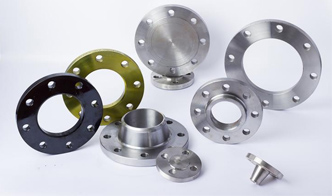-
Cangzhou Yulong Steel Co., Ltd.
-
Phone:
+86 13303177267 -
Email:
admin@ylsteelfittings.com
- English
- Arabic
- Italian
- Spanish
- Portuguese
- German
- kazakh
- Persian
- Greek
- French
- Russian
- Polish
- Thai
- Indonesian
- Vietnamese
- Zulu
- Korean
- Uzbek
- Hindi
- Serbian
- Malay
- Ukrainian
- Gujarati
- Haitian Creole
- hausa
- hawaiian
- Hebrew
- Miao
- Hungarian
- Icelandic
- igbo
- irish
- Japanese
- Javanese
- Kannada
- Khmer
- Rwandese
- Afrikaans
- Albanian
- Amharic
- Armenian
- Azerbaijani
- Basque
- Belarusian
- Bengali
- Bosnian
- Bulgarian
- Catalan
- Cebuano
- China
- China (Taiwan)
- Corsican
- Croatian
- Czech
- Danish
- Esperanto
- Estonian
- Finnish
- Frisian
- Galician
- Georgian
- Kurdish
- Kyrgyz
- Lao
- Latin
- Latvian
- Lithuanian
- Luxembourgish
- Macedonian
- Malgashi
- Malayalam
- Maltese
- Maori
- Marathi
- Mongolian
- Myanmar
- Nepali
- Norwegian
- Norwegian
- Occitan
- Pashto
- Dutch
- Punjabi
- Romanian
- Samoan
- Scottish Gaelic
- Sesotho
- Shona
- Sindhi
- Sinhala
- Slovak
- Slovenian
- Somali
- Sundanese
- Swahili
- Swedish
- Tagalog
- Tajik
- Tamil
- Tatar
- Telugu
- Turkish
- Turkmen
- Urdu
- Uighur
- Welsh
- Bantu
- Yiddish
- Yoruba

Nov . 19, 2024 19:56 Back to list
mandrel bending rectangular tubing
Mandrel Bending of Rectangular Tubing An Overview
Mandrel bending is a sophisticated metal forming process extensively utilized for fabricating various components, particularly in the automotive, aerospace, and construction industries. This method ensures the creation of complex shapes without compromising the structural integrity of the material. Among several forms of materials that can be bent using this technique, rectangular tubing stands out due to its versatility and strength. In this article, we will delve deeper into mandrel bending of rectangular tubing, exploring its benefits, processes, applications, and considerations.
Understanding Mandrel Bending
At its core, mandrel bending involves using a mandrel - an internal tool that supports the workpiece during the bending process. This tool minimizes the risk of deformation or wrinkling, which can be particularly problematic when dealing with geometrically challenging shapes like rectangular tubes. When bending rectangular tubing, the mandrel is inserted inside the tube, providing reinforcement and enabling precise bends. This method allows for sharper corners and tighter radii compared to other bending techniques, which might not offer the same level of support.
Advantages of Mandrel Bending for Rectangular Tubing
1. Improved Integrity One of the primary advantages of mandrel bending is the enhanced structural integrity it provides. The internal support from the mandrel prevents buckling and collapsing of the tube walls, which is especially important in applications where strength is critical.
2. Precision Mandrel bending offers exceptional accuracy and repeatability. The process can produce tight tolerances, ensuring that the final product meets exact specifications. This precision is vital in industries such as aerospace and automotive, where even minor deviations can lead to significant performance issues.
3. Versatility Rectangular tubing can be used in various applications, from frames and supports to decorative structures. Mandrel bending allows manufacturers to create complex shapes tailored to specific design requirements and functionalities.
4. Aesthetic Appeal For architectural and design applications, mandrel bending can create visually appealing elements that enhance the overall aesthetics of a project. The smooth curves and tight radii achieved through this process contribute to a refined appearance.
The Mandrel Bending Process
The mandrel bending process involves several steps
1. Material Selection Choosing the right type of metal is crucial. Common materials include steel, aluminum, and stainless steel, each offering various properties that may influence the final product.
2. Setup and Preparation The rectangular tube is prepped and secured in the bending machine. The appropriate mandrel is chosen based on the specific bend radius desired.
3. Bending The machine begins the bending process, drawing the tube around the mandrel. As the tube bends, the mandrel supports the inner surface, maintaining the shape and preventing collapse.
mandrel bending rectangular tubing

Applications of Mandrel Bending
Mandrel-bent rectangular tubing finds applications in numerous industries
- Automotive Used for exhaust systems, chassis components, and other structural elements where strength and weight are critical.
- Aerospace Ideal for aircraft frames, supports, and components that require high strength-to-weight ratios.
- Construction Integral in building frameworks, railings, and aesthetic architectural features.
- Furniture Used in modern furniture design, providing both functionality and aesthetic appeal.
Considerations in Mandrel Bending
While mandrel bending offers various advantages, there are considerations to keep in mind
- Cost The initial setup and tooling costs for mandrel bending can be higher than other bending processes, which might deter some small-scale manufacturers.
- Material Limitations Not all materials are suitable for bending, and some may have limitations regarding thickness and bend radius.
- Skill Requirements Operating bending machinery and ensuring the accuracy of the process requires skilled personnel, which might necessitate additional training or hiring.
Conclusion
In summary, mandrel bending of rectangular tubing is a highly effective technique for creating strong, precise, and aesthetically pleasing components across various industries. Its ability to maintain the integrity of the material while allowing for complex shapes positions it as an essential process in modern manufacturing. As industries continue to evolve, the demand for efficient and reliable metal forming techniques like mandrel bending will undoubtedly grow, reinforcing its significance in the metalworking landscape.
Latest news
-
ANSI 150P SS304 SO FLANGE
NewsFeb.14,2025
-
ASTM A333GR6 STEEL PIPE
NewsJan.20,2025
-
ANSI B16.5 WELDING NECK FLANGE
NewsJan.15,2026
-
ANSI B16.5 SLIP-ON FLANGE
NewsApr.19,2024
-
SABS 1123 FLANGE
NewsJan.15,2025
-
DIN86044 PLATE FLANGE
NewsApr.19,2024
-
DIN2527 BLIND FLANGE
NewsApr.12,2024
-
JIS B2311 Butt-Welding Fittings LR/SR 45°/90° /180°Seamless/Weld
NewsApr.23,2024











